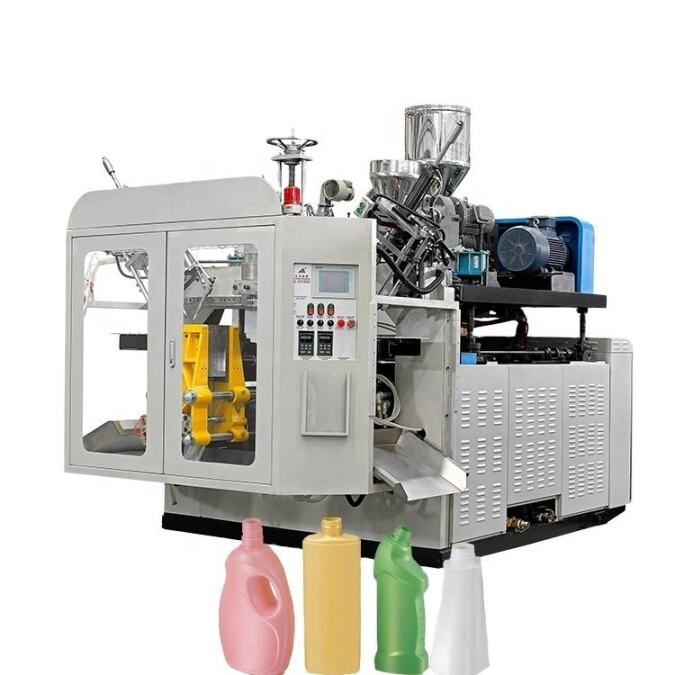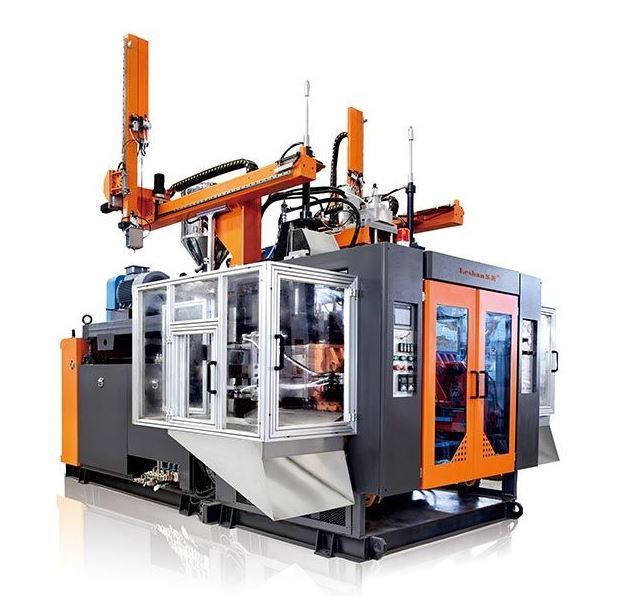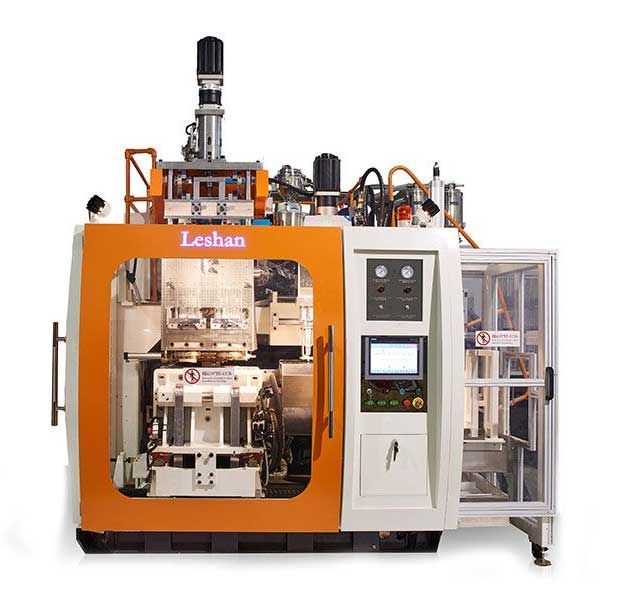
What is a blow molding machine?how does it work?
What is a blow molding machine?how does it work?
What is a blow molding machine?
A blow molding machine is a type of manufacturing equipment that is used to produce hollow objects such as bottles, containers, and other plastic products. It utilizes a process known as blow molding, which involves shaping plastic into a desired form by inflating it with compressed air.
Blow molding machines are commonly used in the plastic industry to produce a wide range of products, including water and soda bottles, milk jugs, automotive parts, and even medical devices. It is a highly efficient and cost-effective method of production, making it an indispensable tool for many businesses.
In this article, we will delve deeper into the world of blow molding machines, exploring its history, types, and most importantly, how it works.

History of Blow Molding Machines
The roots of blow molding can be traced back to the mid-1800s when the first plastic object was created through the process. A man named Alexander Parkes developed a material called Parkesine, which was an early form of plastic. In 1851, he used it to produce a small billiard ball by pouring the material into a mold and then heating it to melt and shape it.
Over the next few decades, advances in technology and material science led to the development of new types of plastics, such as celluloid, polystyrene, and polyethylene terephthalate (PET). These materials were stronger, more flexible, and easier to shape, making them ideal for use in the blow molding process.
The first blow molding machine was invented in the 1930s by the American inventor, James Hendry. It utilized a tube-like extrusion method where plastic was melted and then forced into a mold, which was then inflated with compressed air. This invention revolutionized the plastic industry, making it possible to produce larger and more intricate plastic objects at a faster rate.
Types of Blow Molding Machines
Today, there are three main types of blow molding machines that are used in the industry. These are extrusion blow molding, injection blow molding, and stretch blow molding. Each process has its unique characteristics and is suitable for different types of products.
1. Extrusion Blow Molding
Extrusion blow molding is the most commonly used method of blow molding, accounting for over 90% of all plastic bottles produced globally. In this technique, a molten tube of plastic, known as a parison, is extruded from a die and then inflated with compressed air to take the shape of the mold.
The process involves four stages: parison creation, parison inflation, cooling, and ejection. The parison is first created by melting plastic resin (usually in pellet form) and then extruding it through a die that shapes it into a tube. The tube is then captured by a clamp and held in place as a mold is brought down around it. The mold, which is filled with cold water, cools the plastic and allows it to solidify into the desired shape.
Once the plastic has cooled and solidified, the mold opens, and the finished product is ejected. The process can be automated, allowing for a continuous and high-speed production of plastic objects.
2. Injection Blow Molding
Injection blow molding is a variation of the extrusion blow molding process but with one significant difference. In this method, a preform, which is a finished tube of plastic with a preformed neck, is injected into the mold instead of a parison.
The process starts with the injection of the preform into the mold, which is then inflated with compressed air to take the shape of the mold. The rest of the process is similar to extrusion blow molding, with the cooling and ejection stages.
This method is mostly used for producing smaller, more precise objects such as medical and pharmaceutical containers.
3. Stretch Blow Molding
Stretch blow molding is a combination of the extrusion and injection blow molding processes. In this technique, a preform is first created by injection or extrusion and then reheated to a temperature where it can be stretched. The preform is then placed in a mold and inflated with compressed air, taking the form of the mold.
The main advantage of this process is that it allows for the production of complex shapes and thin-walled containers. It is commonly used for producing PET bottles, such as water and soda bottles.

How Blow Molding Machines Work?
The blow molding process begins with the preparation of the raw material, which is usually in the form of plastic resin pellets. The pellets are loaded into a hopper or directly into the machine's extruder, where they are melted and formed into a parison (in the case of extrusion blow molding) or a preform (in the case of injection and stretch blow molding).
Once the parison or preform is created, it is transferred to the mold, which is then closed and secured between two halves. The mold is designed according to the desired shape and size of the product and is often made from steel or aluminum.
The mold then moves to the inflation station, where it is inflated with compressed air, stretching the plastic to take the shape of the mold. The amount of air and the rate at which it is inflated are carefully controlled to produce a uniform and high-quality product.
After the plastic has taken the shape of the mold, it is cooled through a variety of methods, including the use of cold water or a cooling fan. Once the plastic has solidified, the mold is opened, and the finished product is ejected.
The entire process is highly automated and can be controlled through a computerized system, making it efficient and consistent.
Benefits of Blow Molding Machines
The use of blow molding machines offers numerous benefits to manufacturers, making it a popular method of production in the plastic industry.
One of the main advantages is the cost-effectiveness of the process. Blow molding machines can produce large quantities of plastic products at a low cost, making it a highly efficient method of production. It also allows for the use of various materials, including HDPE, PET, PVC, and PP, giving manufacturers flexibility in their production.
Moreover, the process is continuous and highly automated, reducing the need for manual labor and increasing operator safety. It also produces minimal waste and is environmentally friendly, as the products can be recycled and reused.
Leshan Intelligent Equipment Company is an enterprise that produces plastic machinery molds. Main products: Daily chemistry bottle blow molding machine,PET Machine,Blowing Mould & Injection Mould,Cleaning bottle blow molding machine,Milk bottle blow molding machine,Engine oil bottle blow molding machine,multi-layer coextrusion blow molding machine,athlon series hydraulic machine,Chemical barrel blow molding machine, etc. We have professional equipment such as Numerical-controlled knee bend machine,Vertical CNC gantry machining-center,Four axis CNC machining-center,Numerical-controlled cutting machine,Numerically controlled lathe.
Good quality, reasonable price, fashionable design, widely recognized and trusted by users, able to meet the constantly developing economic and social needs. Our products are not only popular in China, but also exported to regions such as Africa,Europe,Asia.

What are the three main types of blow molding?
In general, there are three main types of blow molding: extrusion blow molding, injection blow molding (one stage), and injection stretch blow molding (two stages).
What is the most commonly blow molded product?
HDPE is the world's #1 plastic and the most commonly blow molded plastic material. It's used in a vast array of products, including bottles for consumer liquids such as shampoo and motor oil, coolers, play structures, fuel tanks, industrial drums, and carrying cases.
What is blow molding also known as?
Blow molding (or moulding) is a manufacturing process for forming hollow plastic parts. It is also used for forming glass bottles or other hollow shapes. The blow molding process. In general, there are three main types of blow molding: extrusion blow molding, injection blow molding, and injection stretch blow molding.
